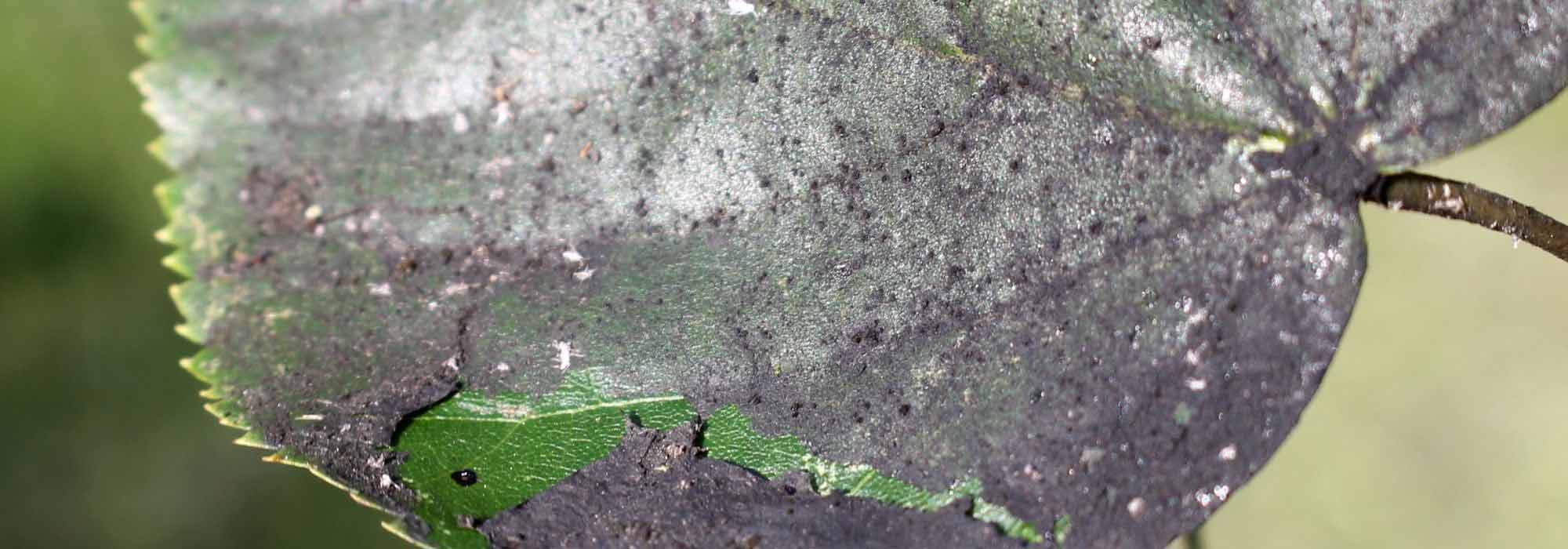
Sooty Mold
WHAT IT IS AND HOW TO ELIMINATE
Higo o higuera
Sooty Mold
Fungal Complex
Pathogen:
Fungus
Type:
Risk to the plant:
INTERMEDIATE
Fumagina o negrilla

WHO CAUSES IT?
The fungal complex that causes sooty mold in fig trees is composed of several saprophytic fungi, including Capnodium spp. and Cladosporium spp. These fungi develop on the surfaces of leaves, branches and fruits covered by honeydew, a sugary substance excreted by insects such as aphids, whiteflies and mealybugs. The fungi do not penetrate the plant tissues, but rather grow on the honeydew, forming a black layer of spores and mycelium. Sporulation is abundant under conditions of high humidity and moderate temperature, and spores are spread primarily by wind and water. Sooty mold reduces the photosynthetic capacity of the plant by covering the surface of the leaves, which can lead to decreased vigor and fruit production.
SYMPTOMS
The disease known as sooty mold affects fig trees, covering the vegetative surfaces with a black layer of fungi that makes photosynthesis and respiration of the plant difficult. The presence of sooty mold is an indirect sign of infestation by honeydew-producing insects, which attract saprophytic fungi.
- Leaves, branches and fruits covered in black powder.
- Reduction of photosynthesis and plant vigor.
- Yellowing and premature leaf fall.
- Decrease in the quality and quantity of the fruits.
- Presence of honeydew-producing insects such as aphids and mealybugs.


DEVELOPMENT CONDITIONS
Temperature:
20-28 °C
Humidity:
70-90 %
HOW IS IT SPREAD?
Wind, water, insects, contaminated tools
HOW TO ELIMINATE IT?
Home treatments
Natural allies
There are no natural allies
Chemical treatments
RECOMMENDED PRODUCTS TO ELIMINATE THE PEST
REPELLENT PLANTS
-
RECOMMENDATIONS
- First control pests that produce honeydew (such as aphids or scale insects).
- Wipe the leaves with a damp cloth or soft sponge to remove the fungus.
- Wash the plant with mild soapy water (potassium soap) and rinse with clean water.
- Increase ventilation if the plant is indoors or in a greenhouse.
- Avoid excess fertilizer, which attracts sucking insects.
- Use natural treatments such as neem oil to prevent new pests.
- If the damage is very large, prune the most affected parts.



















